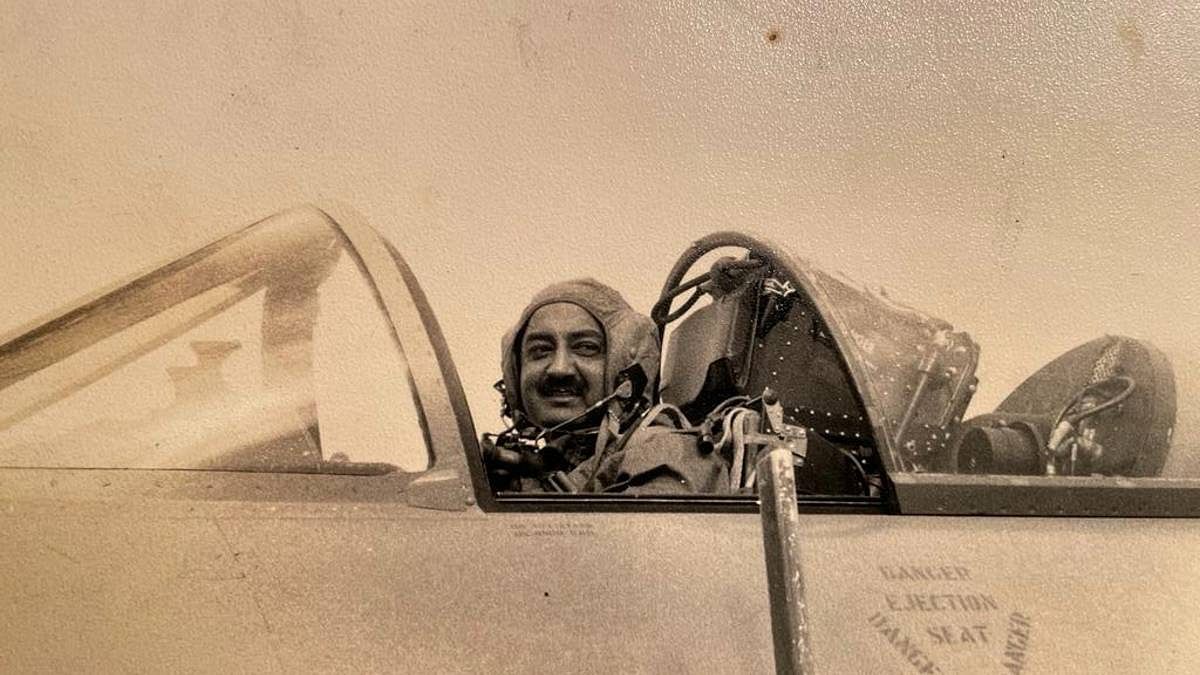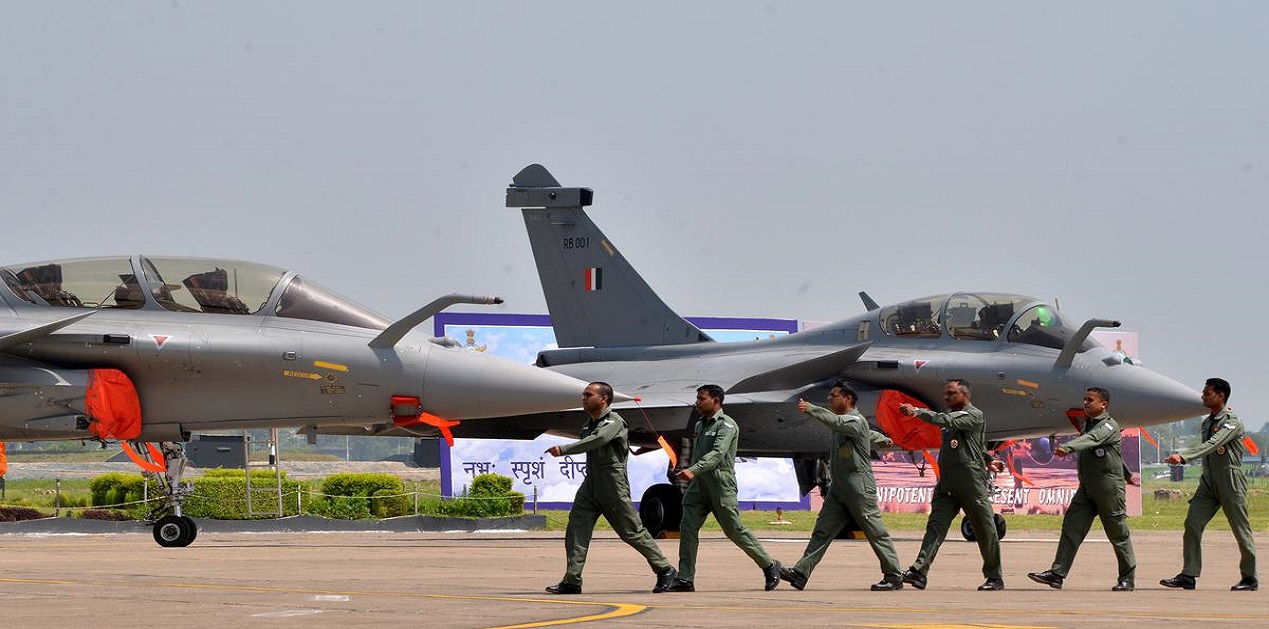SOURCE: AFI


In recent years, the escalating use of drones in modern warfare has transformed the security landscape along India’s volatile borders with Pakistan. The increasing frequency of Pakistani drone incursions, particularly along the Line of Control (LoC) and the international border in Punjab and Jammu, underscores the urgent need for India to develop or acquire a Counter-Rocket, Artillery, and Mortar (C-RAM) type system tailored to neutralize these aerial threats. Such a system would significantly enhance India’s ability to safeguard its airspace and protect critical military and civilian infrastructure from drone-based attacks.
Drones have emerged as a strategic tool for Pakistan, employed for both kinetic operations—such as targeted strikes—and non-kinetic activities, including smuggling drugs, arms, and counterfeit currency across the border. The 2021 drone attack on the Jammu Air Force Station, where low-flying drones dropped improvised explosive devices (IEDs), exposed vulnerabilities in India’s air defense against small, commercially available unmanned aerial vehicles (UAVs). More recently, during the 2025 India-Pakistan tensions following Operation Sindoor, Pakistan launched hundreds of drones, including Turkish-made models, to target Indian military installations across 15 locations, from Srinagar to Bhuj. These incidents highlight Pakistan’s growing reliance on drone swarms to test India’s air defense systems and gather intelligence.
Continue readingSOURCE: AFI


India’s indigenous Integrated Drone Detection and Interdiction System (IDD&IS MK1), also known as D4, has emerged as a pivotal asset in the nation’s air defence arsenal. Developed collaboratively by the Defence Research and Development Organisation (DRDO) and Bharat Electronics Limited (BEL), this laser-based anti-drone system demonstrated exceptional performance during the recent Operation Sindoor, effectively neutralizing multiple low radar cross-section (RCS) drones deployed by Pakistan.
These capabilities enable the system to detect, track, and neutralize drones with minimal radar signatures, ensuring comprehensive protection against aerial threats.
Continue readingSOURCE: AFI


Group Captain Suranjan Das (1920–1970), one of India’s most revered test pilots, left an indelible mark on the nation’s aerospace history through his fearless contributions to the Indian Air Force (IAF) and Hindustan Aeronautics Limited (HAL). As Chief Test Pilot at HAL, Das played a pivotal role in the development of India’s first indigenous fighter aircraft, the HF-24 Marut, and was instrumental in the acquisition of iconic aircraft like the Canberra, Hunter, and Mystere for the IAF.
Tragically, his life was cut short on January 10, 1970, during a test flight of an HF-24 prototype, but his legacy endures, honored by the posthumous conferment of the Padma Vibhushan, India’s second-highest civilian award. This article explores Das’s extraordinary career, his contributions to Indian aviation, and the enduring impact of his sacrifice.
Continue readingSOURCE: PTI


Anil Ambani’s Reliance Defence has signed an agreement with German arms manufacturer Rheinmetall AG for the supply of ammunitions like artillery shells and explosives from a new facility to be set up in Maharashtra. “Reliance Infrastructure Ltd-promoted Reliance Defence Ltd (Reliance Defence) and Dusseldorf-based Rheinmetall AG have agreed on a strategic partnership in the field of ammunition. An Agreement to this effect has now been signed by the representatives of both companies,” the Indian firm said in a statement.
This is the third defence tie-up by the group after joint ventures with Dassault Aviation and Thales of France. “The collaboration between the companies will include the supply of explosives and propellants for medium and large calibre ammunition to Rheinmetall by Reliance,” it said.
Continue readingSOURCE: PTI

An IndiGo pilot operating the Delhi-Srinagar flight, which encountered a sudden hailstorm on Wednesday, initially sought Lahore air traffic control’s permission to briefly use the Pakistan airspace to avoid the turbulence, but the request was rejected, sources said on Thursday.
The incident of flight 6E 2142 encountering severe turbulence is being probed by the Directorate General of Civil Aviation (DGCA), the sources said. The flight, carrying more than 220 people, including Trinamool Congress MPs, encountered a sudden hailstorm, and the pilot reported the “emergency” to air traffic control at Srinagar airport. The flight had landed safely on Wednesday.
Continue readingSOURCE: PTI


India on Thursday welcomed the UK’s decision to hand over the sovereignty of Chagos Islands including tropical atoll of Diego Garcia to Mauritius under a historic deal. The UK is giving up the rights of the islands after more than 50 years. Under the agreement, the UK will have full responsibility for security of strategically-located Diego Garcia.
In its reaction, India said it has consistently supported Mauritius’s “legitimate claim” over the Chagos Archipelago in keeping with its principled position on “decolonisation, respect for sovereignty, and the territorial integrity of nations”.
Continue readingSOURCE: PTI
)

China drove global oil demand growth over the last decade, but now India is poised to take the lead in demand growth over the next decade, according to a latest report by Moody’s Ratings.
China and India are No. 2 and No.3 oil consumers in the world. But there are notable differences in demand growth in the two countries. “Demand growth and import reliance will be higher in India,” Moody’s said. “Demand will grow faster in India than in China over the next decade, as China’s economic growth slows and penetration of new energy vehicles accelerates.” Consumption of crude oil – the raw material for making fuels like petrol and diesel – in China will peak in the next 3-5 years, while in India Moody’s expect annual growth of 3-5 per cent in the same period.
Continue readingSOURCE: PTI


President Droupadi Murmu on Thursday conferred six Kirti Chakras, including four posthumously, to personnel of the Army and Jammu and Kashmir Police for displaying indomitable courage and extraordinary valour in the line of duty.
Kirti Chakra is India’s second-highest peacetime gallantry award.
Continue readingSOURCE: IANS


Two terrorists were killed and a soldier injured in an ongoing gunfight between joint security forces and terrorists in Jammu and Kashmir’s Kishtwar district on Thursday, officials confirmed. The operation, involving personnel from Para Two, 11 Rashtriya Rifles, 7 Assam Rifles, and the Special Operations Group (SOG) of J&K Police, was launched in the Singhpora Chatroo area after receiving intelligence about the presence of three to four Jaish-e-Mohammad (JeM) terrorists.
Named “Operation Trashi” by the Indian Army’s White Knight Corps, the joint forces engaged the terrorists on early Thursday morning. In a social media update, the Corps said, “Contact has been established with terrorists during a joint operation with Jammu and Kashmir Police at Chhatru, Kishtwar. Additional troops have been inducted, and operations are ongoing to neutralize the terrorists.”
Continue readingSOURCE: IDRW.ORG


Srinivasagopalan Rangarajan, Chairman and Managing Director of Data Patterns, a leading Indian defense electronics company, recently shared a significant milestone with Hindu BusinessLine. “Just 3-4 weeks ago, our seekers were flight-tested in BrahMos as part of missile trials by DRDO, and it was a textbook performance,” Rangarajan announced, highlighting the success of Data Patterns’ indigenous seeker technology in the prestigious BrahMos supersonic cruise missile program.
In missile systems, the seeker is a critical component responsible for detecting and tracking targets, ensuring precision strikes even in complex combat scenarios. The flawless performance of Data Patterns’ seeker during the Defence Research and Development Organisation’s (DRDO) recent trials underscores the growing capability of India’s private defense sector in delivering cutting-edge technologies for strategic programs.
Continue readingSOURCE: IDRW.ORG


In a landmark step toward achieving self-reliance in defense manufacturing, the Indian Navy signed a ?270 crore project sanction order with Kirloskar Oil Engines Limited (KOEL) on April 2, 2025, for the design and development of a 6MW medium-speed marine diesel engine. This contract, executed under the Make-I category, not only aims to reduce India’s dependence on imported high-capacity diesel engines but also lays the foundation for a scalable 3-10MW engine family, with KOEL confidently asserting its capability to develop a 10MW, 20-cylinder variant based on the V12, 6MW design.
This initiative, celebrated as a pivotal moment for India’s defense industrial ecosystem, will power the propulsion and generation systems of Indian Navy and Indian Coast Guard vessels, strengthening maritime security in the Indian Ocean Region (IOR).
Continue readingSOURCE: AFI


The Chakra Dialogues Foundation (CDF), a think tank established by former Indian Air Force (IAF) pilot Wing Commander Satyam Kushwaha (Retd), has released a comprehensive report detailing the strategic and operational losses incurred by the Pakistan Air Force (PAF) during India’s Operation Sindoor in April-May 2025.
Leveraging real-time intelligence, surveillance, reconnaissance (ISR) data, cross-verified media reports, and classified budgetary tenders, the report provides a high-confidence estimate of the damages sustained by the PAF, pegging the total financial impact at $3.35732 billion USD.
Continue readingSOURCE: AFI


The Indian Ministry of Defence (MoD) is poised to greenlight the bulk procurement of the indigenously developed Smart Anti-Airfield Weapon (SAAW), a precision-guided glide bomb designed by the Defence Research and Development Organisation (DRDO). This move comes amid heightened regional tensions, with unverified claims of the weapon’s use in a recent strike on Pakistan’s Rahim Yar Khan airbase, underscoring its strategic importance.
The SAAW is a lightweight, long-range precision-guided munition designed to neutralize enemy airfield infrastructure, including runways, taxi tracks, radars, bunkers, and aircraft hangars, with a range of up to 100 kilometers. Weighing approximately 125 kilograms, the SAAW is equipped with advanced navigation systems, including satellite-based INS-GPS and, in its latest iterations, an electro-optical (EO) seeker with Imaging Infrared (IIR) technology for enhanced precision. The weapon’s ability to strike targets with a Circular Error Probable (CEP) of less than 15 meters makes it a potent tool for the IAF to engage high-value targets from a safe distance, minimizing exposure to enemy air defenses.
Continue readingSOURCE: AFI


In a significant leap forward for India’s defense technology, the country has developed a cutting-edge Satellite Navigation System (SNS) Jammer capable of blocking signals from China’s BeiDou navigation system, alongside other global navigation systems like GPS, GLONASS, Galileo, and NavIC. This development marks a strategic advancement in India’s electronic warfare capabilities, aimed at enhancing national security amid growing geopolitical tensions in the region.
The SNS Jammer, developed by India’s defense research ecosystem, is designed to generate RF jamming signals that can disrupt the functioning of satellite navigation systems. According to details from Accord Software & Systems, a key player in this project, the jammer is equipped with a modular architecture featuring multiple cards to target dual frequencies across all constellations, including BeiDou. This flexibility ensures that the system can adapt to future GNSS (Global Navigation Satellite System) signals through additional plug-in hardware, making it a forward-looking solution for India’s defense needs.
Continue readingSOURCE: AFI


The Indian Air Force (IAF) has long been a formidable force in South Asia, equipped with advanced platforms like the Sukhoi Su-30MKI, Dassault Rafale, and indigenous Tejas fighters. However, its approach to cross-border operations against Pakistan, particularly in response to terrorist activities, has often followed a predictable pattern: striking terror targets while allowing the Pakistan Air Force (PAF) to retain its operational capabilities.
This strategy, which prioritizes hitting terrorist infrastructure over neutralizing Pakistan’s air defenses, has given the PAF opportunities to respond, regroup, and challenge India’s air superiority. It is time for the IAF to adopt a bolder, more decisive approach—prioritizing the destruction of PAF’s long-range radars, AWACS platforms, and other critical assets before targeting terror camps, rather than granting Pakistan’s air force an “off-ramp” to recover.
Continue reading